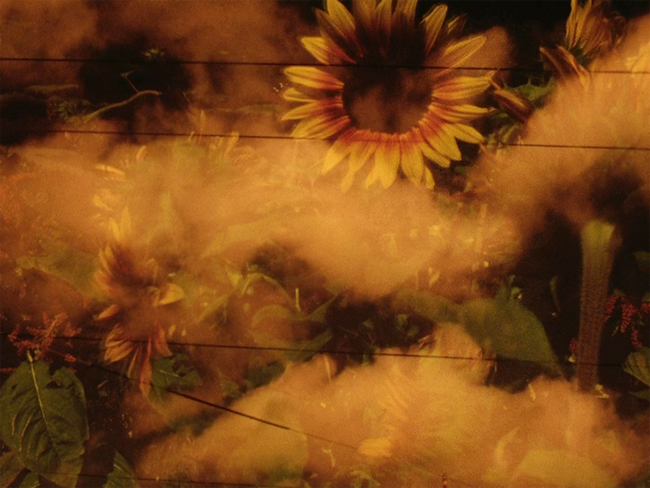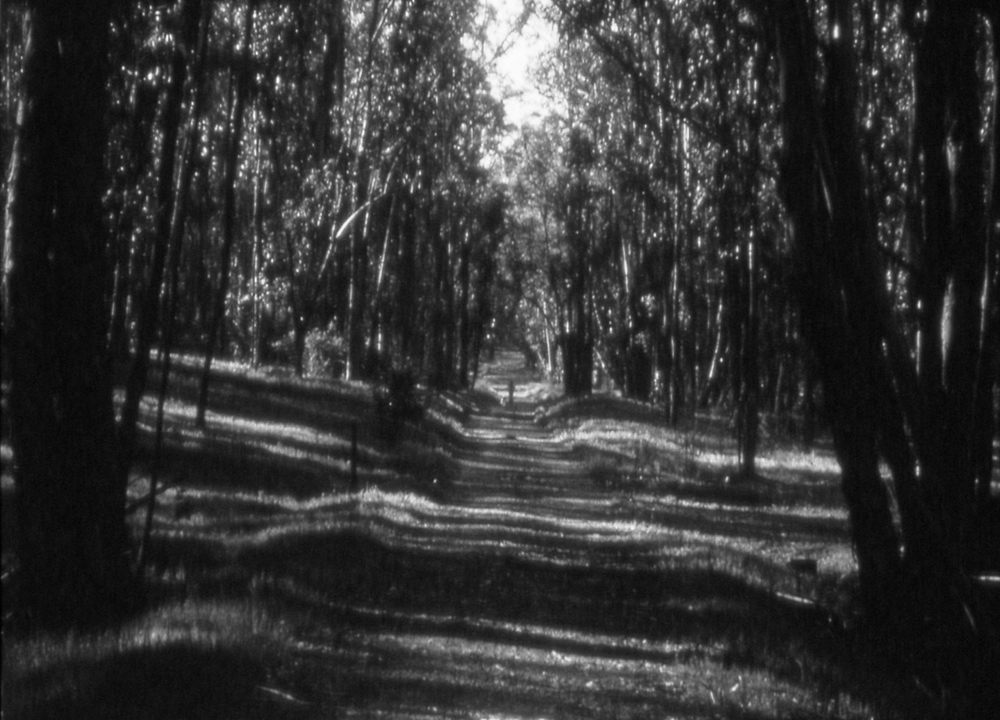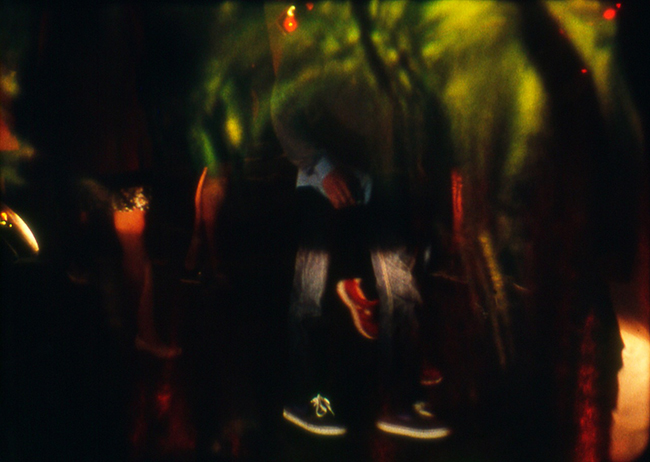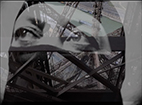Now Available: New Digital Files and Prints from Jerome Hiler
Posted May 7th, 2024 in Announcements, New Acquisitions, New Digital Files, New Films, News / Events

Canyon Cinema is pleased to announce that new digital files and 4K DCPs of Jerome Hiler‘s films are now available for rent. Revised 16mm versions of New Shores (1971-87) and In the Stone House (2012) are also now available from Canyon.
In addition, from May 9–16, 2024, the Museum of Modern Art in New York presents the multi-part retrospective Illuminated Hours: The Cinema of Nathaniel Dorsky and Jerome Hiler, which celebrates 60 years of ongoing explorations and unique advancements in poetic cinema. The series coincides with the American release of Illuminated Hours: The Early Cinema of Nathaniel Dorsky and Jerome Hiler, a publication that brings together texts and images from their first decades of filmmaking, as well as the forthcoming series Illuminated Hours: Three Evenings with Nathaniel Dorsky and Jerome Hiler at Anthology Film Archives (May 17–19).
To purchase a copy of Illuminated Hours: The Early Cinema of Nathaniel Dorsky and Jerome Hiler (Lumière, 2023), visit: canyon-cinema-foundation.square.site/product/illuminated-hours/115
The 258-page book, edited by Francisco Algarín Navarro and Carlos Saldaña, covers each filmmaker’s life and work from childhood to the early 2000s and tells the story of 40 years of a personal and artistic relationship. It features extensive original interviews with each of them as well as new and reprinted texts by Anne Waldman, Haden Guest, Arindam Sen, Pablo Marín, Celeste Araújo, Mark McElhatten, Jonas Mekas, Stan Brakhage, Warren Sonbert, and Max Goldberg, along with more than a hundred color photographs, documents, and stills.

New Shores (1971-87, 35 minutes, color, silent, 16mm [18fps], digital file, or DCP)
New Shores is a sister film to In the Stone House in many ways. Like the latter film, it consists of earlier footage edited in recent years. It could be seen as a sequel to In the Stone House especially since it begins with a cross-country journey to the West Coast, where I settled, and concludes with a visit, in 1987, to the “stone house” in rural New Jersey. Even though there is some sort of time line that can be imagined, the film stands on its own. It is simply a series of episodes that touch upon facets of living in a new area with new weather, new people, new identities and stubborn old fears. The Bolex camera goes to work across landscapes and living areas, workplaces and gatherings. A dance of images: can beauty partner with dread and death? It’s a film of the coexistences that percolate beneath the surface of ordinary events. A film of useless hopes and baseless fears. As mentioned, we conclude with a return to the house in New Jersey. We meet the current tenant and explain who we are. Our visit sets off a brief return to the ‘sixties and the memory of a Halloween dance and, then, returns to the present. This Autumnal rondo completes the seasonal progression of In the Stone House yet re-states the impossibility of any going back. (JH)

Words of Mercury (2011, 25 minutes, color, silent, 16mm [18fps], digital file, or DCP)
The title Words of Mercury derives from the final lines of Love’s Labour’s Lost. It announces a sudden death that ends the merriment and intrigue that enveloped the young lovers. This film journeys from a stark, wintery start and develops into a rich (but then too rich) ripeness that ends abruptly with the sight of a distant vehicle slipping into the night. The richness of fruition invites its demise. (JH)

In the Stone House (2012, 35 minutes, color/b&w, silent, 16mm [18fps], digital file, or DCP)
In the Stone House records and recollects a period of life of four years in rural New Jersey. In the latter 1960s, two young guys with monastic leanings leave the clatter of Manhattan’s art and film scene to catch the wave of higher consciousness that was about to change the world forever to find themselves washed ashore in a place only slightly updated from Way Down East. The monastic retreat quickly turned into the weekend getaway for a host of extravagant Manhattanites seeking films and fun. We learned from hitch-hiking guests that the police referred to our haven as “the stone house.” Although New Shores is a completely independent project, it could also be seen as a continuation of the world of In the Stone House. It affords glimpses of life led over three decades from the 1970s to the 1990s in San Francisco. (JH)

Marginalia (2016, 23 minutes, color, silent, 16mm [18fps], digital file, or DCP)
Marginalia is a contemplation in shades of grey and periodic color on the state and place of society in a quickly changing environment. It could be seen as a view from the margins. Or, as its title suggests, it might be expostulatory comments on the page-edge of our shared circumstances. Its air is filled with things slipping away to make way for an as yet unknown birth. The characters that we approach most proximately are a family with two young sons. The forebodings in this film have a kind of antidote in the way ideas and skills can be passed along to young generations outside the margins of the main arena of digital entertainment. As educators discuss dropping cursive writing from the syllabus of future grade schools, my interest in all things hand-made becomes acute. Scribblings course their way across the screen as scratches: the margins invade center stage. Images of electrical power occasionally appear as well as a distant Facebook headquarters. Will future writing depend on such things? Could a power outage bring an end to the written word? Not really, but so much and so much more in our lives is dependent on mega-energy. (JH)

Bagatelle I (2016, 16 minutes, color/b&w, silent, 16mm [18fps], digital file, or DCP)
Bagatelle I is a film with a thread of portraiture running through it. We meet an artist clinging to a fence during a break from his workplace. The walls of his world are formidable and highly energetic. Still, there are spaces where solitary work can transform a chaotic world. (JH)

Bagatelle II (2016, 16 minutes, color, silent, 16mm [18fps], digital file, or DCP)
“Mr. Hiler’s misleadingly titled Bagatelle II draws on ravishing moments in time (dancing lights, scudding clouds, a bathing woman) that build into what seems like a self-portrait of the artist” (Manohla Dargis, The New York Times, Oct. 6, 2016)
In 2016, The New York Times referred to my film Bagatelle II as “misleadingly titled”. The film does, indeed, seem to exceed the expectations of the title, which promises a small, even trivial film. I can, at least, address the issue of its 16-minute length. Originally, I had planned to have a series of brief moments delineated by numbered pauses with the title Bagatelles. As I worked, a flow developed that eventually eliminated all the pauses, yet I kept the name out of affection and its association, for me, of its use in classical music as a category of small piano pieces. As a filmmaker who identifies as a visual composer, this suite of scenes is aptly named. The scenes run from the earliest surviving footage I shot in New York City and my home district of Jamaica, NY (a railroad hub) in the 1960’s, through a life with close friends and assorted sights up to the present. That, along with its comparative brevity, makes for a “life flashing before your eyes” moment for the filmmaker. For the viewer, my hope is for a less dire experience: a set of appearances imbued with the flavor of memory. (JH)

Ruling Star (2019, 22 minutes, color, silent, 16mm [18fps], digital file, or DCP)
Ruling Star literally refers to the Sun as the giver of life and light here on Earth. There is also a metaphorical aspect that refers to an interior guide that a person has that sees one through a time of uncertainty and confusion. While making the film, I found myself facing a number of new situations. For one thing, this was my first film using negative stock after a lifetime of shooting color reversal. The new color spectrum was extremely limited and seemed to gravitate to either brown-orange or blue. Many of my initial intentions for the film were changing and new motifs were arising. Eventually, I found myself conceptually lost and unable to devise a way forward. None of my life-long habits were of help. This was a time when I had to open up to a greater freshness of purpose. I had to go forward into the unknown without a plan. The glory of making films that are completely self-motivated is precisely that one can try to find one’s own rules. It makes an overly pre-determined entity like film much more like a musical improvisation. To be sure, I have always worked in a way that was improvisational, but never had I had to trust instinct so blindly. (JH)


